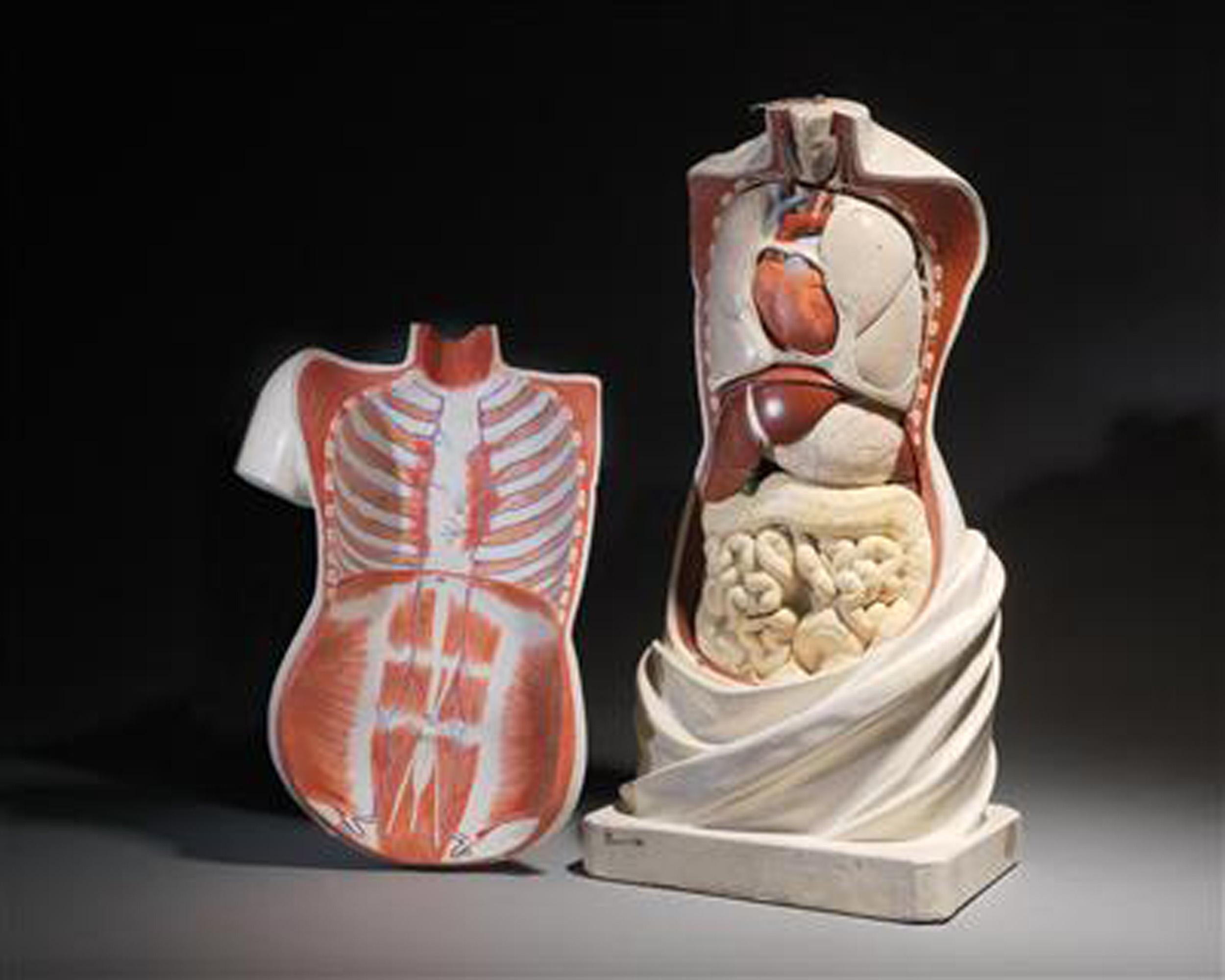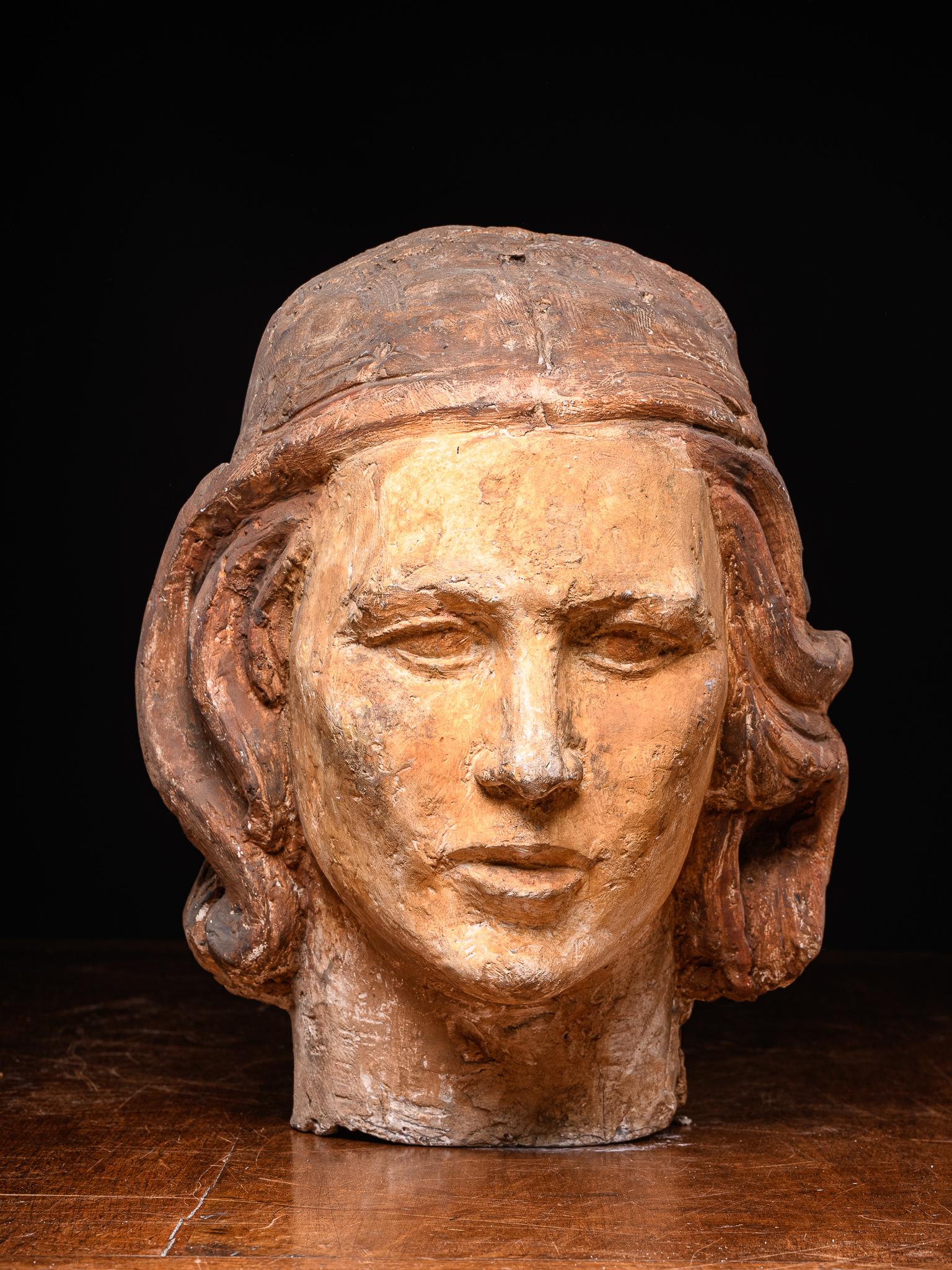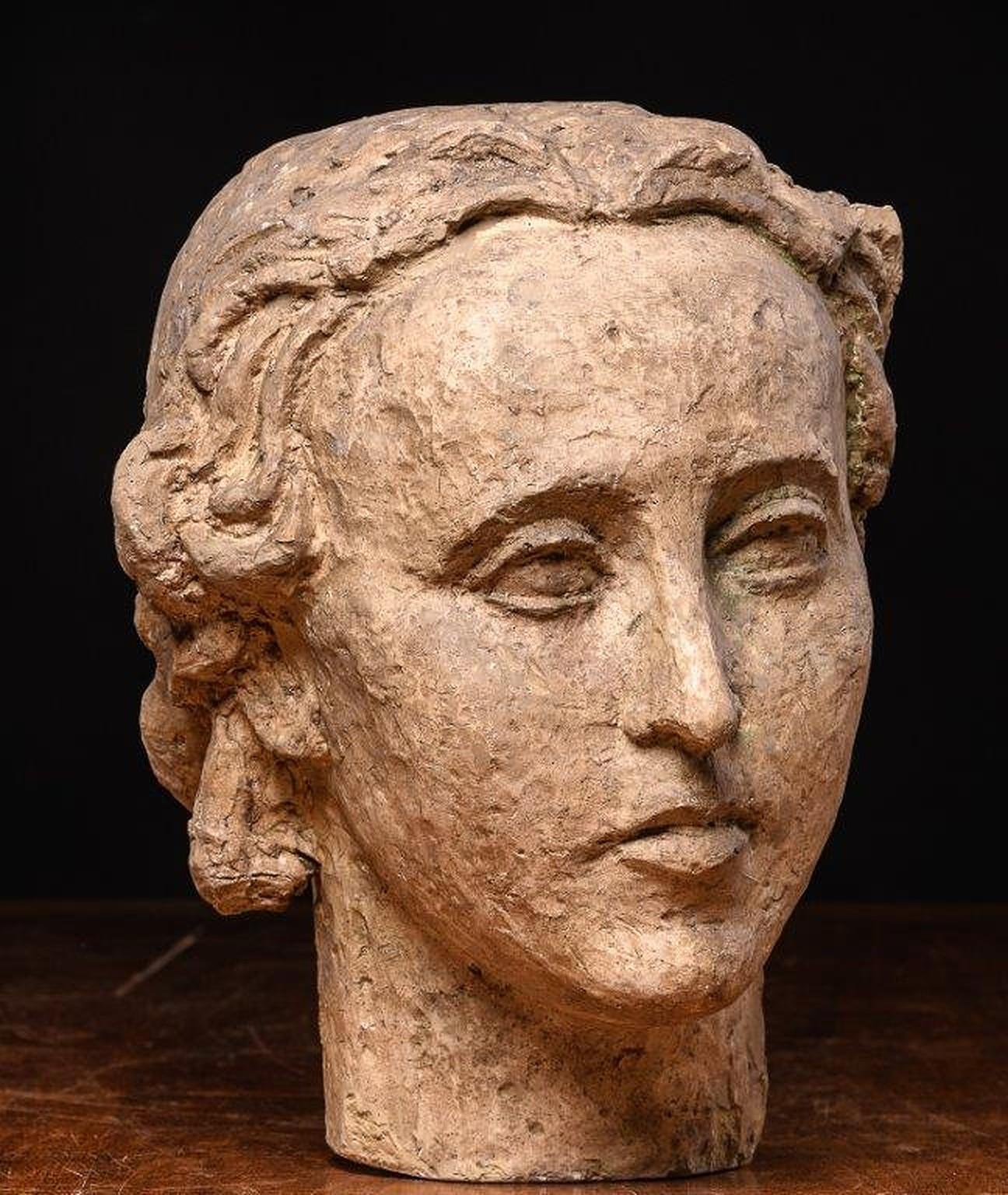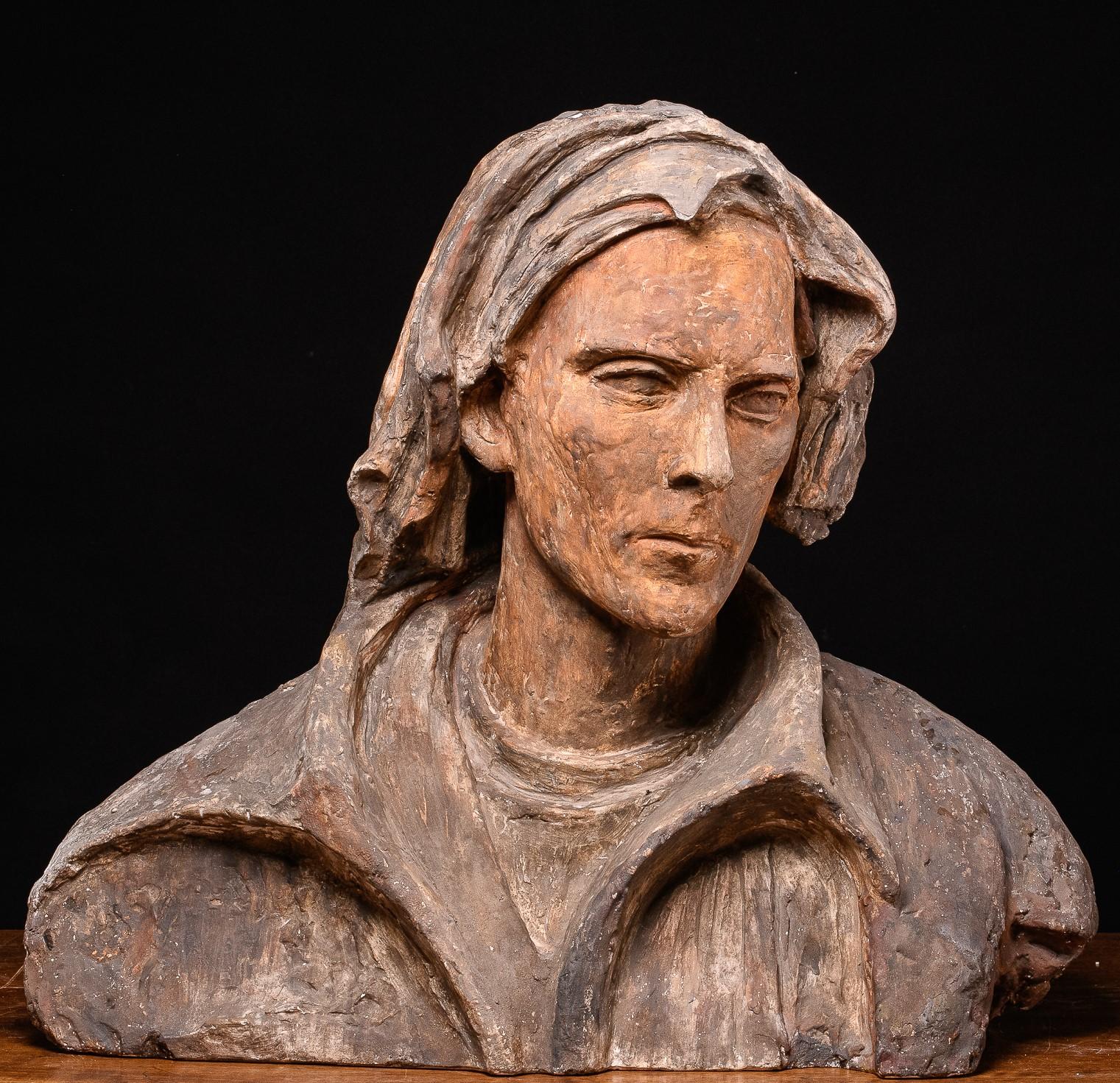Items Similar to Gustave Fontaine (1877-1952), Selection of 3 Sculptures plaster model Heads
Want more images or videos?
Request additional images or videos from the seller
1 of 16
Gustave FontaineGustave Fontaine (1877-1952), Selection of 3 Sculptures plaster model Heads
About the Item
Gustave FONTAINE ( Etterbeek 1877-1952 Brussels). Sculptor–painter. Took courses in Saint-Josse-ten-Noode, continued his training at the Academy of Brussels and with the sculptor Julien Dillens (1901-1903). From 1919 to 1925 he lived in Paris, painted and sculpted. In 1921, he exhibited at the Salon d'Automne and made study trips to Italy, Germany, Switzerland and the Netherlands. Co-founder in 1918 of the Cercle des Quinze with Jos Albert, Brusselmans , Spilliaert , Schirren , Paerels, Parent, Martens, Leroux, Fontaine, De Kat, Dehoy, Counhaye, Cockx, Capouillé. After the war, Gustave Fontaine made several war monuments, among others in Liège, the stone statues: La Résistance Liégeoise and Le Fusillé. He also creates portraits of women, men and girls: La Rieuse, Malvina(his daughter), Henri Wauters (1922), Tête de bohémienne (1923) and many others.
- Creator:Gustave Fontaine (1877 - 1952, Belgian)
- Dimensions:Height: 20.08 in (51 cm)Width: 11.42 in (29 cm)Depth: 9.45 in (24 cm)
- Medium:
- Period:
- Condition:The size mentionned is the one of the tallest piece. Please contact for seperate purchase eventually.
- Gallery Location:brussel, BE
- Reference Number:
About the Seller
5.0
Vetted Seller
These experienced sellers undergo a comprehensive evaluation by our team of in-house experts.
1stDibs seller since 2021
13 sales on 1stDibs
Typical response time: 4 hours
- ShippingRetrieving quote...Ships From: leuven, Belgium
- Return PolicyA return for this item may be initiated within 3 days of delivery.
More From This SellerView All
- 19th Century Didactic Torso Model by Jozef Steger, designed by Carl E. Bock.Located in brussel, BEThe German sculpture Franz Josef Steger (1845-1938), under the guidance of Professor Wilhelm His (1831-1904) and based on the designs of anatomist Carl Ernst Bock (1809-1874), revol...Category
19th Century Modern Figurative Sculptures
MaterialsPlaster
- Gustave Fontaine (1877-1952), polychromed model head.Located in brussel, BEGustave FONTAINE ( Etterbeek 1877-1952 Brussels). Sculptor–painter. Took courses in Saint-Josse-ten-Noode, continued his training at the Academy of Brussels and with the sculptor Julien Dillens...Category
20th Century Contemporary Figurative Sculptures
MaterialsPlaster
- Gustave Fontaine, Sculptured polychromed Female modelled Head.Located in brussel, BEGustave Fontaine (Etterbeek 1877-1952 Brussels) was a sculptor–painter. He took courses in Saint-Josse-ten-Noode and continued his training at the Academy of Brussels and with the sculptor Julien...Category
20th Century Contemporary Figurative Sculptures
MaterialsPlaster
- Sculptured polychromed Female modelled Head from artist workshop.Located in brussel, BEGustave Fontaine (Etterbeek 1877-1952 Brussels) was a sculptor–painter. He took courses in Saint-Josse-ten-Noode and continued his training at the Aca...Category
20th Century Art Deco Figurative Sculptures
MaterialsPlaster
- Sculptured polychromed Male modelled Bust from artist workshop.Located in brussel, BEGustave Fontaine (Etterbeek 1877-1952 Brussels) was a sculptor–painter. He took courses in Saint-Josse-ten-Noode and continued his training at the Academy of Brussels and with the sculptor Julien...Category
20th Century Art Deco Figurative Sculptures
MaterialsPlaster
- Pair of 19th C Inuit Male Statues carved in Walrus TuskLocated in brussel, BEThis pair is a fine example of ivory carving done by Inuit natives; Native Americans who live within and just below the Arctic Circle. Each year they procured a substantial amount of ivory from their walrus kills. The raw ivory was usually thrown on top of their huts to weather and properly season. Proper seasoning caused the ivory to dry from the inside out and thus rarely cracks. Hand-made tools were improvised for carving the ivory and bow-string hand drills were also in use. Ivory carving has been practiced by the Inuit for over 2,000 years and traditionally only Inuit men were allowed to carve objects out of ivory, bone, and wood. Artists found their inspiration in daily life and the natural world around them. Ivory items made from walrus tusks...Category
19th Century More Art
MaterialsOrganic Material
You May Also Like
- Patinated Plaster European Art Nouveau BustLocated in Troy, NYThis patinated plaster art nouveau bust is of a classic figure wearing a turban-style headpiece. The neck has beautiful proportions on the front and ...Category
Late 19th Century Art Nouveau Figurative Sculptures
MaterialsPlaster, Glaze
- The Flower Seller after Diego RiveraBy (after) Diego RiveraLocated in Pasadena, CAThe flower seller midcentury plaster sculpture after a painting by Diego rivera major Mexican artist. Some stains from an old varnishCategory
Mid-20th Century Modern Sculptures
MaterialsPlaster
- Fire Plug Souvenir - "Chicago August 1968" (P. 10), Claes OldenburgBy Claes OldenburgLocated in Fairfield, CTArtist: Claus Oldenburg (1929) Title: Fire Plug Souvenir - "Chicago August 1968" (P. 10) Year: 1968 Medium: Cast plaster multiple with acrylic paint Ed...Category
1960s Pop Art Figurative Sculptures
MaterialsAcrylic, Plaster
- "The Nose" White Modern Plaster Sculpture on a Lucite and Black MarbleLocated in Pasadena, CAThis whimsical sculpture features a white plaster nose on a black marble base sitting on a Lucite one. The overall impression is elegant, because of the ...Category
1990s Modern Figurative Sculptures
MaterialsMarble
- Contemporary Wall Sculpture Installation House Bed Insect Mantis ArchitectureBy Gary SczerbaniewiczLocated in Buffalo, NYThe Palace at 3am (2022) by Gary Sczerbaniewicz. Wood, laser cut & etched chipboard, latex, plaster, and cast plastic.Category
2010s Contemporary Figurative Sculptures
MaterialsPlastic, Latex, Plaster, Wood
- Contemporary Sculpture Hybrid Animal Bright Blue Orange Plaster AcrylicBy Polly LittleLocated in Buffalo, NYHybrid II by Polly Little (2022). Plaster and acrylic paint.Category
2010s Contemporary Figurative Sculptures
MaterialsPlaster, Acrylic





